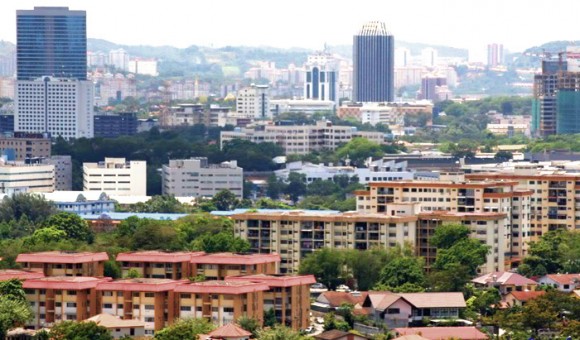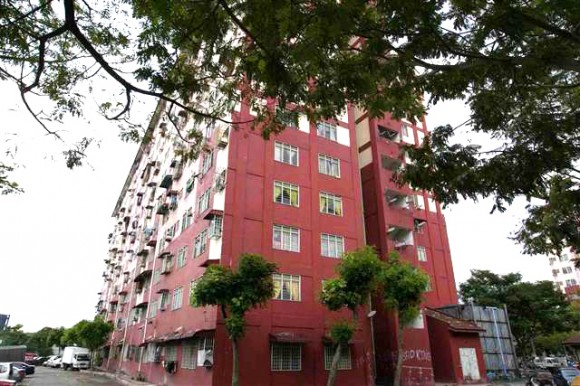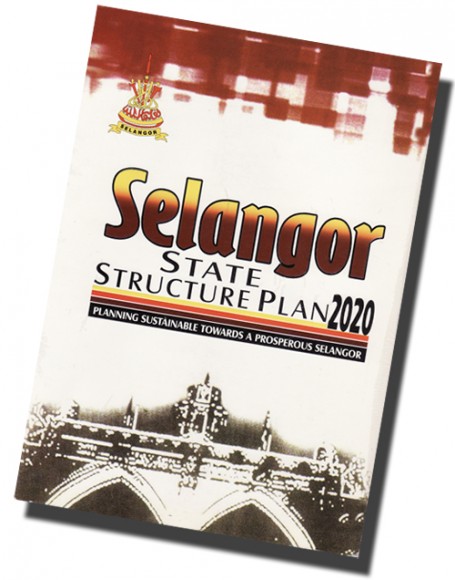
IN my previous article, I raised a point about a government rule that requires two hectares of open space for every 1,000 persons. Admittedly, the reasoning behind such a rule was not explained in detail, which led reader hclau to hypothesise that such a rule would raise the cost of buying a house for the average buyer.
It is good that readers question government policy, because it should be incumbent on the government to explain and justify their policies. Even though I’m no longer in government, my stint as a councillor led me to deal with numerous development issues that allowed me to appreciate and understand why these policies are needed.
Today’s exciting episode of Ampersand will explore the reasoning behind this policy and where it came from.
Devaluation
The first thing I would like to address is the correlation that such a policy would increase property prices. Property prices in Petaling Jaya (PJ) are already sky-high without this policy being implemented. PJ has almost 600,000 residents, which would mean that 1,200ha of open space are required if this policy was adopted. PJ does not have 1,200ha of open space demarcated within its borders.
Since there’s no evidence to support the notion that this policy would increase property prices, allow me to put forth a different argument: No developer ever wants to build a property that would go down in value. Indeed, it is not difficult to find brochures where the developer guarantees a minimum price value for the property.

So, taking the fact that the open-space policy has never been implemented and the fact that developers would want their property prices to constantly go up, would property prices ever come down?
Property values can drop when high-density buildings are allowed without the requisite open space rules being enforced upon them. The price drop, however, would not affect the properties that are being built. The prices of existing houses in the neighbourhood where the new project is coming up would be the ones affected. After all, the developer only has to look out for the interest of their own buyers and not the value of surrounding properties that were already bought and sold.
The example that comes to mind is the Mentari Flats, which were built in PJS 5 Taman Desaria, right next to the houses that were there first. Because there was no consideration for the required open space, everything is crammed into a small area. The original residents in the area reported a spike in crime and accidents after the flats came up and the value of their houses plummeted.
Other examples include the houses located in SS2 next to the Tropicana City Mall project, and houses along Jalan Universiti on the Petaling Jaya side.

Commercial viability
Even commercial buildings are not immune to the effects of property devaluation from newer developments. An example would be the new Paradigm Mall in Kelana Jaya, which no doubt tremendously increased the value of the land it sits on.
This new mall is, however, slowly killing off its next-door neighbour and rival, Giant Mall. Giant Mall was the destination of choice for nearby residents to shop at until Paradigm Mall opened. If Giant Mall wants to stay competitive, it would have to build something bigger and better, and the only way to do that would be to ignore the open-space requirement.
Paradigm Mall is bigger and better than Giant Mall because it did not allocate the requisite open space. Having said that, Giant Mall, too, did not have the required open space set aside when it was first developed and it was certainly bigger and better than the sundry shops that were operating in the area for its time.
By not following the rules on open space, the local council is promoting purely commercial interests and is encouraging developers to constantly build bigger and better with nary a thought for existing property owners.
Religious needs
Aside from commercial considerations, having sufficient open space could help ease ethnic tension and provide an answer to the shortage of land for non-Muslim houses of worship.
Although open space is defined as a publicly accessible space under the law, the authorities have in the past reclassified open spaces to be used for other purposes when the need arises. An example of this would be the relocation of a Hindu temple in Shah Alam.
Do note that there are actually other rules that mandate the provision of land for both Muslim and non-Muslim religious purposes. But because the authorities have also failed to implement these rules, the easiest way to correct this “oversight” is to ensure sufficient open spaces are set aside.
Because land in an urban area is a premium, setting aside such land for religious purposes (or open spaces for the matter) would be deemed much too costly. This is why we see temples and churches springing up in factories or shop lots, along with accusations that these properties are not approved for religious use.
 In this instance, by not requiring developers to provide the requisite open space, the local council is indirectly causing the tension between ethnic and religious groups.
In this instance, by not requiring developers to provide the requisite open space, the local council is indirectly causing the tension between ethnic and religious groups.
I use places of worship as an example, but there are certainly other social infrastructure facilities that are insufficient like schools, fire stations, police stations, sewage treatment plants and electrical power supply stations. Some of the problems associated with shortages of these facilities are detailed in the Selangor State Structure Plan.
Social policy
This brings me to the policy of two hectares of open space for every 1,000 persons. That policy was formulated in 2005 by the National Physical Planning Council, whose chairperson is the prime minister, the deputy chairperson the deputy prime minister, and the committee members the chief ministers and menteris besar of their respective states.
That policy was recorded in a 2007 circular that was then issued to all the state governments. I shall quote a portion from this circular:
Penetapan saiz kawasan lapang, kemudahan sosial dalam sesuatu kawasan kediaman juga memberi impak kepada kepadatan penduduk. Mesyuarat Majlis Perancan Fizikal Negara ke 5/2005 pada 6 Oktober 2005 telah bersetuju supaya untuk mencapai sasaran taraf Negara Maju, kawasan lapang seluas dua (2) hektar perlu disediakan bagi setiap satu ribu (1,000) penduduk.
So, this policy was meant to cater to both the size of the open space and to provide for social-infrastructural facilities. Having looked at the social problems I described above, besides others, I believe that this policy is exactly what we need.
From my experience in the local council, money alone cannot solve all the social problems that we face as a nation, which is why, for me, a government cannot and must not ever consider an issue or policy based solely on profit concerns.
This open space policy is a good mechanism to ensure the nation’s social needs are prioritised. Now, if only it would be implemented. ![]()
Former MBPJ councillor KW Mak has just launched his book The Truth About Petaling Jaya Land on the history of Petaling Jaya town and why property owners there with leasehold land titles actually deserve freehold titles. Get a copy for RM10 by contacting Mak at 016-2939603.


Alwin Lim says
This brings me to Citizen Nades’s latest article on PJS Desa Mentari.
The fact that then MPPJ councillor Kapt Datuk Zahar Hashim was a Mentari Properties director created yet more brouhaha. Records showed that Mentari paid just RM3,753 for the land measuring 266,325 sq ft, or 71 sen per square feet. This created more furor.
But justice was on the side of the residents. In October 2007, the High Court found in their favour and the council’s appeal to the Court of Appeal was dismissed.
To me, its downright criminal for a councillor to approve and pay that small sum for the place and approve it himself. The best part is the amount of compensation to the families, including two boys who drowned to death when they were trying to retrieve their football because the playground was built too near to the drainage. All compensation is paid with ratepayer’s money. Almost RM12 million in total that could have been used to further enhance livability in PJ.
Where is justice? Why must PJ citizens pay that amount? Shouldn’t the director of Mentari pay since he profited so much from buying the land at the price tag that he made himself? And the life lost — can any amount bring back human life? Where is the right of PJ residents?
Of course one can argue Section 95 of the Street, Drainage and Buildings Act, which gives them immunity of sorts for the blunder. But doesn’t the clear-cut attempt to fool residents deserve some sort of punishment rather than navigating through sections of the law that seem disrespectable?
Do we owe the council a living that we keep paying for their mistakes?
KW Mak says
@ Alwin Lim
You can bypass Section 95 and get the culprits to be responsible, provided the council actually investigates and pinpoints the individuals who approved the project without following the rules.
Whether you will see this happen or not is highly debatable, since Pakatan Rakyat has been in power for more than four years now and the way development projects are approved now do not appear to follow the rules either.
Regards.
hclau says
Having firsthand experience with the current govt, I can vouch that the latitude given for “special circumstances” is much less than with the previous govt. Most of the projects which blatantly flout the rules were approved earlier.
BTW, I am a supporter of logical implementation NOT political, so you do not have to go off the deep end on this one!!
KW Mak says
@ hclau
Much less still means there is latitude given. Just because you do not feel the effects of this latitude doesn’t mean there aren’t others who feel victimised by it.
I have stacks of complaint letters from PJ residents who are not political party members to back up my assertion, so pardon me if I do not agree with your assessment.
Regards.
Kong Kek Kuat says
@KW Mak
And how did the National Physical Planning Council come up with the formula of 2,000 hectares for every one thousand residents?
And are you saying that “open space” is not merely just open space, but includes “social infrastructures”? Because that would be interesting. What amounts to “social infrastructures” besides the obvious erections on children´s playground?
What about social infrastructures which are not accessible by virtue of your race or your status as a kafir, even though we all know very well that it´s our tax money which built them? Shopping malls seem to me to be social enough to be a social infrastructure. In which case, the residents of Damansara Jaya should have nothing to complain about the upcoming “new” infrastructure.
PS. Reading the circular, it does not state “social infrastructure” but rather “social facilities” (kemudahan social), which include infrastructures. But going by the state of the Malay language these days, only Allah knows what the writer actually meant in that circular. If you ask the person who wrote that circular, there´s a possibility that he [or she]´d answer: “Urr… lebih kurang sama la bang — sama la tu!”
KW Mak says
@ Kong Kek Kuat
I do not know the exact reasoning behind the calculation, since I’m not privy to the meeting minutes of the National Physical Planning Council (nor am I so prominent that I can rub shoulders with former Prime Minister Tun Abdullah Ahmad Badawi to find out the reason).
What I can say is that this policy was alluded to in the National Physical Plan (NPP), which was published in 2005. The NPP states that Malaysian cities are currently experiencing (in 2005) a glut of commercial properties and overcrowding with (if I recall correctly) 29 persons per hectare when the ideal population density is 25 persons per hectare (not exact wording as I’m away from the books). There were some pretty radical suggestions from the book, but that’s another topic altogether.
Anyway, I believe the policy is meant to address urban development population density where if there are apartment blocks that increase the density of an area way past the 25 persons per hectare, a large open space to compensate and bring down the density would be needed.
Regards.
P.S. It’s two hectares for every 1,000 persons, not 2,000 hectares…LOL
Kong Kek Kuat says
@ KW Mak
Yes, “2 hectares”. I´m having one of those everything-seems-to-be-going-wrong months. It must be because of Umno. Ok, ok … just kidding.
hclau says
The open space policy as it stands cannot be “practically implemented”. This is given the nature and sizes of land parcels being owned by private individuals or companies.
Open space policies should have been thought out holistically and the responsibility taken up by government town planners. This would make it more practical to impose. Of course, the mechanism to arrest for corrupt practice have to be thought out alongside this.
For example, just one town-planning scenario: Taking PJ as an example, the government of the day, with the township’s Master Plan, should divide it up into precinct and define an accessible open space within “X” minutes via public transport or bicycle or on foot.
Having done that, it needs to go ahead and acquire land that it does not already own from private owners – using whatever code necessary. A certain amount of political will would be needed in this instance. A decent compensation would sooth the pain. Developers can then be asked to pay a “set off” levy for the open space in lieu.
This way, we would have a city with a certain amount of parkland for “X” number of citizens without the current “discretionary” definitions of “open space” by certain quarters.
KW Mak says
@hclau
I think the town planners did think of the problems and issues – that’s why there are policies governing the matter. In this instance, I believe it’s more of the implementers (the town council) that does not follow the rules.
I have plenty of other books on building design, sewerage systems and other infrastructures by the Federal Town Planning Department which if you were to compare the rules with actual buildings today, you will find that none of the buildings were built following those rules.
Regards.
Kong Kek Kuat says
Well, I guess y´all can kiss town-planning goodbye, at least in some areas unfortunate enough to be affected by those PR1MA projects.
Pushed by the Opposition to come up with solutions for the current (and past) problems, and forced by their outdated mentality and culture of ‘upsmanship’, the govt is going to churn out slums if the latest hare-brained off-the-cuff announcement is anything to go by.
KW Mak says
@ Kong Kek Kuat
PR1MA is a short-sighted attempt to gain voter support, but then again, when have Malaysian politicians discussed long-term gains that require short-term pains with the public?
Regards.
Kong Kek Kuat says
@ KW Mak
I think Gan Pei Ling´s Can local elections protect public interest and the environment? is relevant here.
George says
I have noticed how open spaces, where children once played, were turned into concrete monsters by the former Umno government in Selangor. It was rampant. Slowly, poor children had no where to kick a ball or throw one. This led to the loss of community spirit. The result today is that rich children are driven for swimming and futsal and remain indoors with digital games to while their time, while the poor ones scavenge for whatever place they can to have some fun playing. Even that space is taken away under private ownership. Looking around, we have very maladjusted children growing up unable to release the pent-up emotions of growing children and truly lack the kind of social mobility once enjoyed in rural areas – meaning rich kids did play with poor kids and considered themselves equal. So the segregation is between super poor and super rich children. Thanks again for a great awareness-raising article.
KW Mak says
@ George
I am currently doing research on what was once designated open space that has been illegally turned into buildings. Once I am done with compiling the paperwork / evidence / legal references, I will publish it.
I don’t think I will be very popular with both BN and PR governments when the results are shown though.
Regards.
Bong says
Philanthropists with extra cash should buy up these private plots of land and convert it into green parks.
Flag of Truth says
Let us ask Robert Kuok to buy it and turn it into a public place 🙂
KW Mak says
@ Bong and Flag of Truth
What do philanthropists have to do with the implementation of government policy? Do we need Robert Kuok to buy up land to be turned into police and fire stations, too?
Actually, reality is not too far off from your suggestion. Wasn’t there a particular public lake in Subang Jaya that was owned by a rich private firm where they left it alone for many years but recently decided that they wanted to develop it?